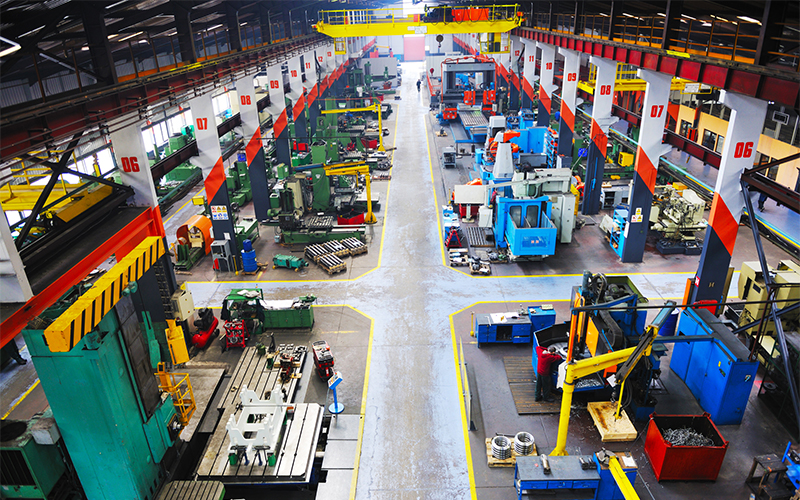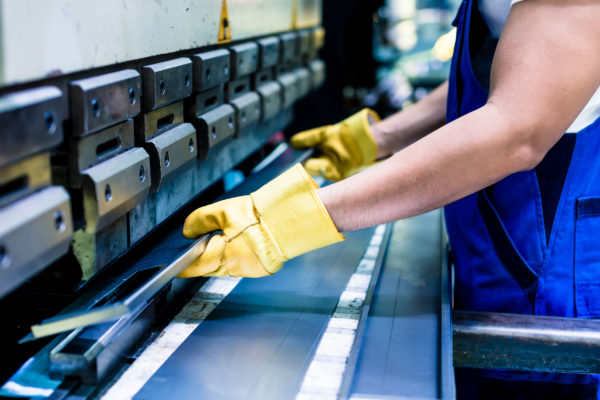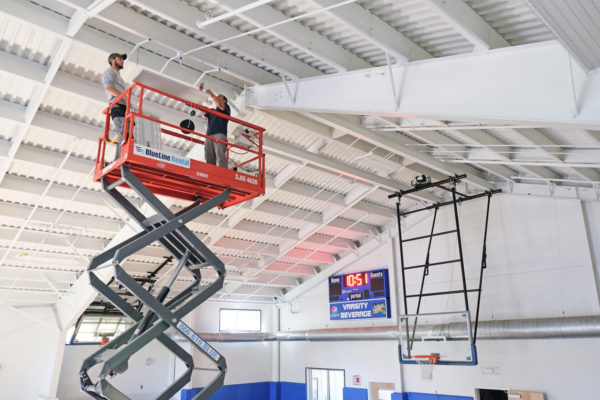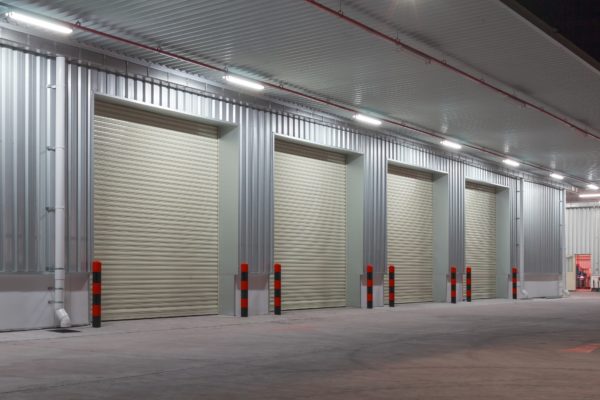
Manufacturing and industrial facilities use massive amounts of energy. Consequently, it should come as no surprise that these buildings are also expensive to operate. A significant part of your facilities’ cost of operation is a result of keeping the lights on. The U.S. Department of Energy estimates that 40-60% of a commercial building’s electric bill comes from lighting. If you’re using conventional light fixtures, you may be consuming more energy—and paying—for way more than needed. Luckily, there’s never been a better time to invest in new, energy efficient LED lighting solutions.
Benefits of a Well-Lit Building
In manufacturing and industrial environments, a well-lit building leads to higher productivity, safer machine operation, improved product quality, and accident prevention. LED light fixtures contribute to these benefits through improved light quality, reduced maintenance, and most-importantly: improved efficiency. Let’s take a look at these benefits a little closer:
Improved Light Quality

Poor lighting causes eye strain, headaches, poor concentration and fatigue, resulting in frequent mistakes, accidents, or even severe injury. The proper light quality improves visibility and concentration, in turn, creating a safer environment for employees. Adequate light levels also improve employee comfort and can contribute to an increase in productivity. Lighting with good uniformity and high color rendering make it easier to identify defects and perform inspection tasks. Improving light quality can also mitigate machine operating accidents and prevent falls by eliminating flicker.
Reduced Maintenance
By utilizing industrial LED fixtures and lamps, you can drastically reduce your maintenance costs with up to 40x the service life of a legacy commercial lighting system – no more having to rent a scissor-lift (or bucket truck for exterior fixtures) to change lamps.

An LED conversion or retrofit also helps to get rid of waste disposal issues by transitioning from High-Intensity Discharge Lamps (e.g. high pressure sodium and metal halide) to more advanced technology, thus eliminating the need to recycle lamps that contain mercury or other harmful chemicals.
Reducing Energy Consumption and Improved Efficiency
By retrofitting your conventional lighting system with an energy efficient LED solution, your factory could save up to 80% in energy costs. The savings are so significant that you could finance the replacement LED system using the energy cost-savings achieved from the new lights themselves! LED fixtures help to reduce the overall CO2 footprint of a manufacturing facility by lowering the total kWh consumption, thereby reducing transportation emissions from not needing to source and recycle lamps.
Industrial LED Lighting Considerations
You should consider an LED lighting conversion or retrofit if your factory or warehouse still uses outdated lighting technology (e.g. metal halide, fluorescent, high-pressure sodium, high-intensity discharge). There are a number of factors unique to your facility that will increase the benefits provided from installing an LED lighting system. We’ll go over some of these factors in more detail below.
Number of Fixtures
The more lights you have in your factory or warehouse, the more you’ll be able to take advantage of the benefits of an LED lighting upgrade. Light fixtures that count towards your total number include: high bay light fixtures, low bay light fixtures, dock lights, exterior security fixtures, and parking lot light fixtures. Each of these lighting types can be converted or retrofit with a more energy efficient LED fixture or LED bulb.

To maximize your energy savings, and better qualify for Federal and State rebate and incentive programs, your facility retrofit should have thirty or more new LED fixtures and lamps installed. If you’re replacing only a few light fixtures at your facility, it may take a number of years before you start to see any savings on your utility bill.
24/7 Operations
In today’s highly-productive environment, manufacturing facilities never sleep. While operating 24 hours a day increases capacity and productivity, it also upsurges your energy bill from having the lights on day-in and day-out. If you’re using your lights at a high rate each week, utility companies are much more willing to provide incentives in order to help reduce your energy consumption (i.e. providing rebates to help offset the cost of a facility LED conversion or retrofit to lower energy usage).
Integrated Lighting Controls
In most factories, there are areas that are often not in use. LED fixtures with integrated occupancy sensors can control lighting levels in unoccupied areas of your facility to maximize energy savings. Once activity is detected, the light levels go up instantly (another benefit of LED lighting) to meet the required light levels for employees working in that area.

Once the sensors detect a period of inactivity, they turn the fixtures off or dim them to a preset level, achieving additional energy savings and extended lamp life. Some integrated occupancy sensors also include a daylight harvesting function, constantly measuring the light levels coming from other sources, and adjusts the lumen output accordingly.
Think Twice Before Investing in Cheap LEDs
Legacy lighting systems are expensive to operate, but buying cheap LEDs is not the way to go. Low-quality LEDs don’t sustain their advertised efficacy, life and light output that you expect, forcing you to buy again after a short period of time. At Energy Performance Lighting, we see this issue time and time again.
The cheaper products might come at an unexpected price, and end up costing you up to three times the initial investment versus buying quality LED fixtures. As a brand-neutral lighting solutions provider, our lighting designers ensure every facility gets THE BEST product for their upgrade, not just the best in someone’s inventory.
Vapor-Tight Requirements
Although dependent on industry, many factories and commercial spaces are semi-conditioned or non-conditioned spaces and may potentially be exposed to rain, ice, or other types of moisture. If these environments aren’t properly managed, it can lead to rust, corrosion, and other types of damage to your lighting over time. Luckily, there are many brands of industrial light fixtures that are specifically designed with vapor-tight fixtures to ensure bulbs and hardware continues to function properly.
High Ambient Temperature Requirements
As heat rises, hot air becomes trapped in the ceiling. Over time, it’s common to have ambient temperatures at the mounting height of the light fixture to reach 55°C up to 65°C, which can dramatically reduce the life of the fixture. It’s important to remember when selecting an LED fixture, that the product you select is intended to operate for many years. The only way to ensure you have a well-lit factory over that time is to make sure you’re installing LED fixtures designed and rated for high ambient temperatures.
Selecting the Best LED Fixture for Your Facility
High Bay Fixtures: Often used in factories and warehouses with ceilings approximately 25 feet and higher, high bay fixtures are used for vertical, as well as horizontal, lighting planes, and are functional with a variety of reflectors. While high bay lighting fixtures typically used fluorescent or metal halide bulbs in the past, LED high bay fixtures outperform these more conventional luminaires in a number of important ways (e.g. average lifespan, correlated-color temperature (CCT), instantaneous on/off, dimming capabilities, directionality, efficiency, heat emissions and more).
Low Bay Fixtures: LED low bay lighting provides full-spectrum, crisp white light in factories and warehouses with low ceilings and mounting heights. Low bay LED luminaires deliver similar light levels to traditional metal halide and fluorescent fixtures but provide better uniformity and coverage.
Recessed Troffer Fixtures: Troffer fixtures are available in three (3) standard sizes: 1’x4’, 2’x2’, and 2’x4’. While conventional troffer fixtures typically included T12 and/or T8 fluorescent lamps, with 2-4 lamps per fixture, LED solutions either consist of new LED fixtures or LED linear tube retrofits. Deciding which option is best will depend on your facility’s current operating conditions. LED troffer fixtures can be surface-mounted, pendant-mounted, or chain-hung. Choosing how to mount your troffer fixture depends on ceiling fit and desired light performance.
Conclusion
If you want to make your facility more energy efficient, reduce energy consumption and maintenance costs, and boost productivity, contact the experts at Energy Performance Lighting.
EPL specializes in the design and implementation of state-of-the-art, energy efficient LED lighting solutions. Our brand-neutral lighting designs, and designer-electrician collaboration ensures you’re getting the highest-quality performance lighting system available. We don’t “sell” you on recommendations. We educate you and your team on options and tradeoffs to help drive effective, informed decisions.
Our lighting upgrade process delivers guaranteed performance and we’ll work with you every step of the way and manage each phase of your project, including:
- Initial budget requirements and project goals
- Investment-grade facility audit
- LED conversion or retrofit design with advice on product selection
- Turnkey installation using in-house electricians and master electricians
- Rebate and incentive research, preparation, and final certifications
For more information, or to schedule consultation, contact us today.
